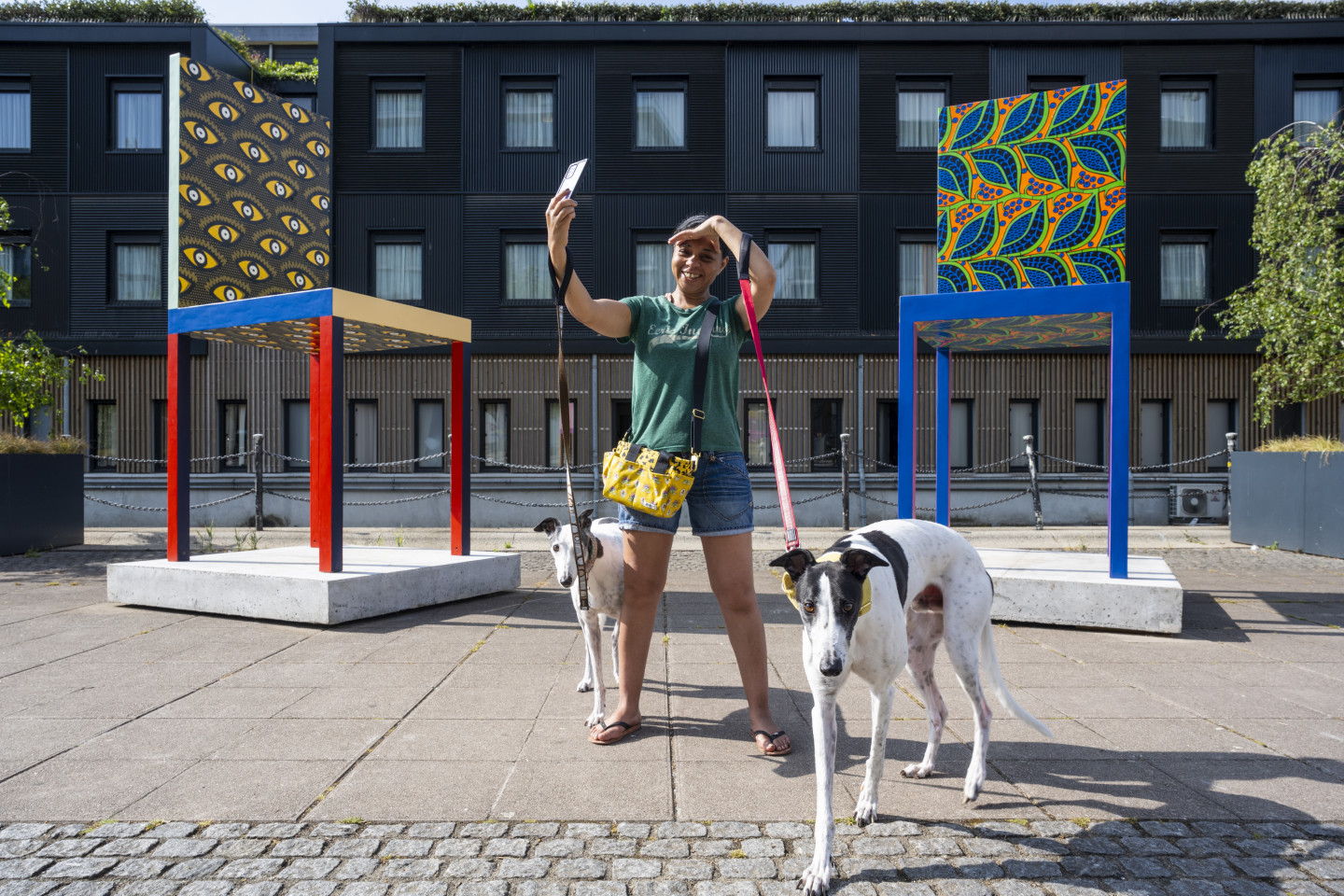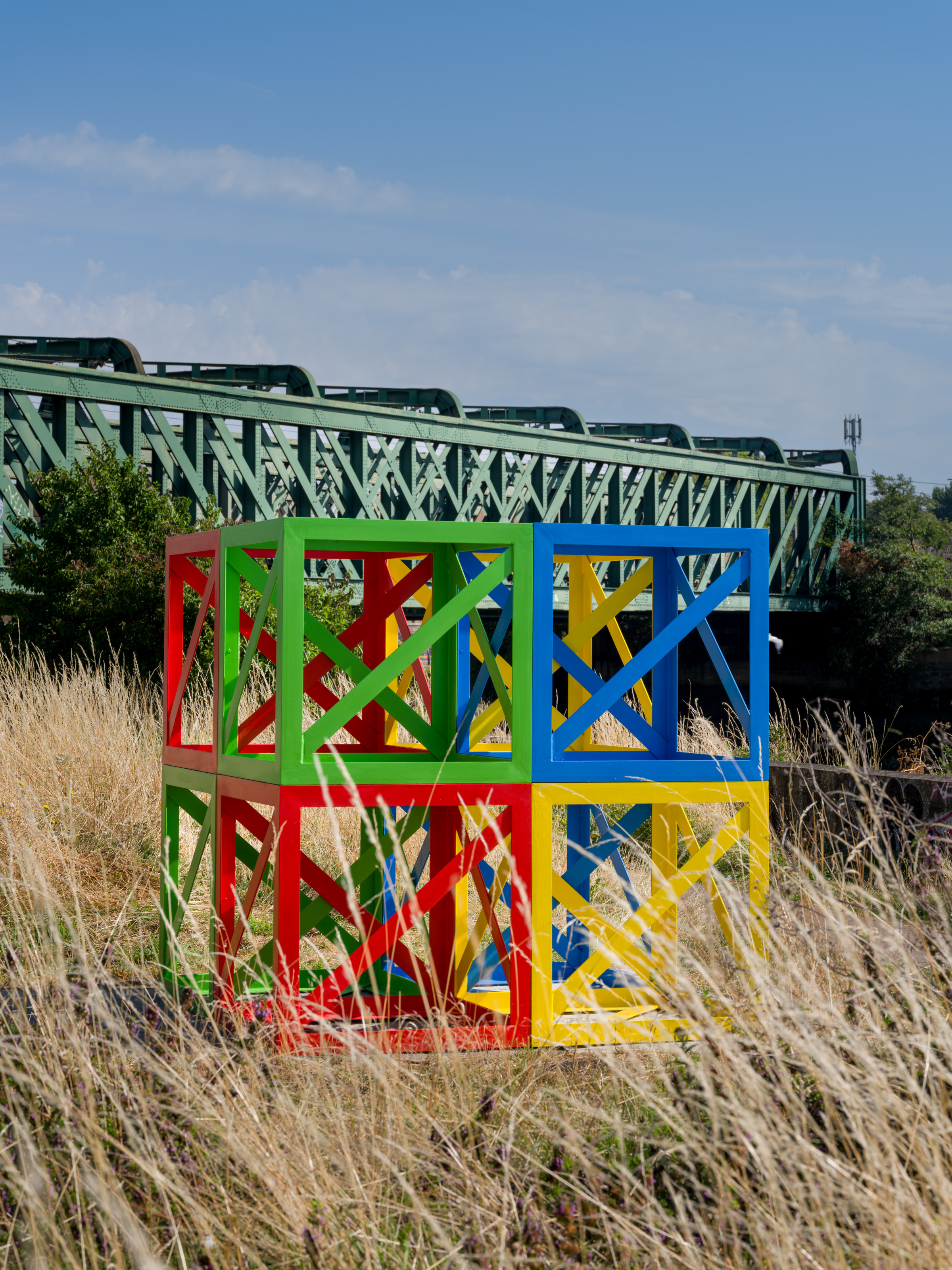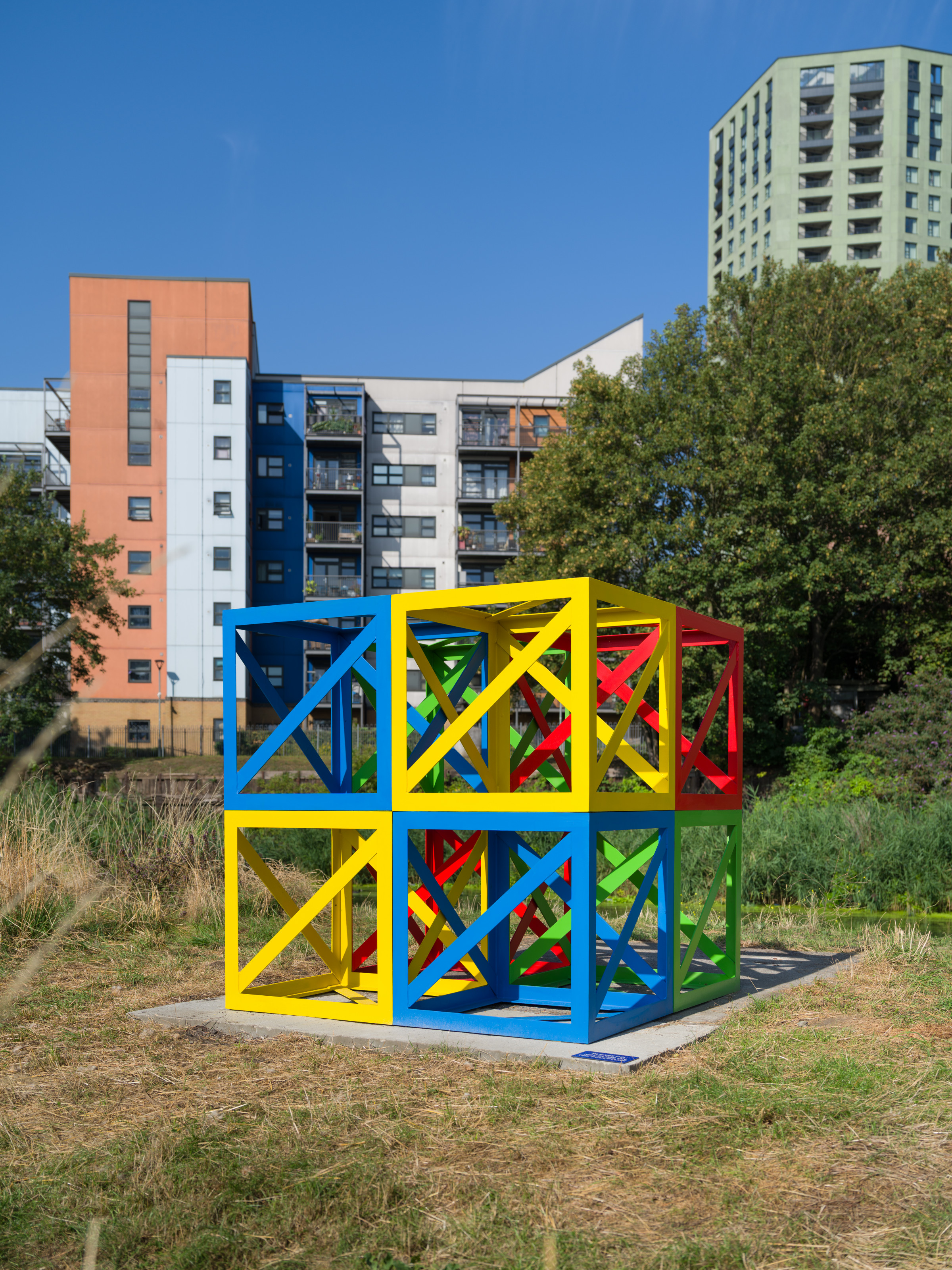Rasheed Araeen
Untitled The Line, 2025
Rasheed Araeen is renowned for his use of an open cube structure with diagonal support in his sculptural works. These modular units are arranged in different configurations and scales for each location. Araeen, who trained as a civil engineer in the 1950s, was originally a painter. He first began producing sculpture after moving from Karachi (Pakistan) to London in 1964 and has pioneered his own form of minimalist sculpture ever since. Araeen’s artistic career, which spans more than 60 years, has also included painting, performance, writing and editing, intertwined with his political activism.
Untitled The Line was created by the artist specifically for this site. It sits between the natural and urban environment, on a piece of grassy land between the Lee Navigation and Bow Creek, with houseboats and a railway bridge nearby. Its location reflects themes that have played an important role in Araeen’s practice, including water, engineering and freedom of movement. The artist has described the symmetry of his geometric forms as suggestive of egalitarianism. Here, reinforced through his use of bright colours, the work stands out as a symbol of hope for a better world.
The commission is part of a wider ongoing collaboration between Araeen, The Line and Arup Phase 2. In July 2024, the UK’s first manifestation of Araeen’s 1970 participatory art action – Discosailing: A Ballet on Water – was presented on The Line at Queen Elizabeth Olympic Park to coincide with the opening of the Paris 2024 Olympic Games. The collaboration also resulted in a series of STEAM design workshops held in secondary schools local to The Line. The workshops were organised together with BEING (Black Engineers in the New Generation), an initiative founded by a group of young Black Arup engineers.
In September 2025, The Line hosted a free installation of Rasheed Araeen’s Reading Room, as part of London Sculpture Week 2025,
Courtesy of the Artist and Grosvenor Gallery
Co-curated with Arup Phase 2
Supported by




Biography
Born and educated in Pakistan, Rasheed Araeen trained as an engineer before moving to Europe in the 1960s to become one of the pioneers of minimalist sculpture in Britain.
In the following decades, Araeen’s practice – in performance, photography, painting and sculpture – began to develop an overtly political content which drew attention to the way in which Black artists were invisible within the dominant Eurocentric culture.
Through his activities as a publisher, writer, and artist, Araeen was a pivotal figure in establishing a Black voice in the British arts. In 1987 he founded the groundbreaking journal Third Text and in 1989 he curated the seminal exhibition The Other Story, Afro-Asian artists in post-war Britain at the Southbank Centre. This was the first major retrospective of work by Asian and African artists in Britain, all of whom had made significant contributions to the artistic scene since the 1950s,
Araeen has exhibited widely, and his work is included in public and private collections around the world. Recent exhibitions include Frieze Sculpture, London (2021) and 2018’s Rasheed Araeen: A Retrospective which toured to Van Abbemuseum, Eindhoven, The Netherlands, MAMCO Genève, Switzerland, BALTIC Centre for Contemporary Art, Gateshead, and in 2019, to the Garage Museum of Contemporary Art, Moscow, Russia. In 2019 he opened Shamiyaana, a communal meeting place and restaurant in Stoke Newington. As an extension of his studio practice, the space is also a manifestation of his belief in the potential of collective action. In 2023, Araeen’s participatory sculpture, Zero to Infinity, was shown in the Turbine Hall at Tate Modern, London.
Araeen lives and works in London.
Image: Angus Mill


